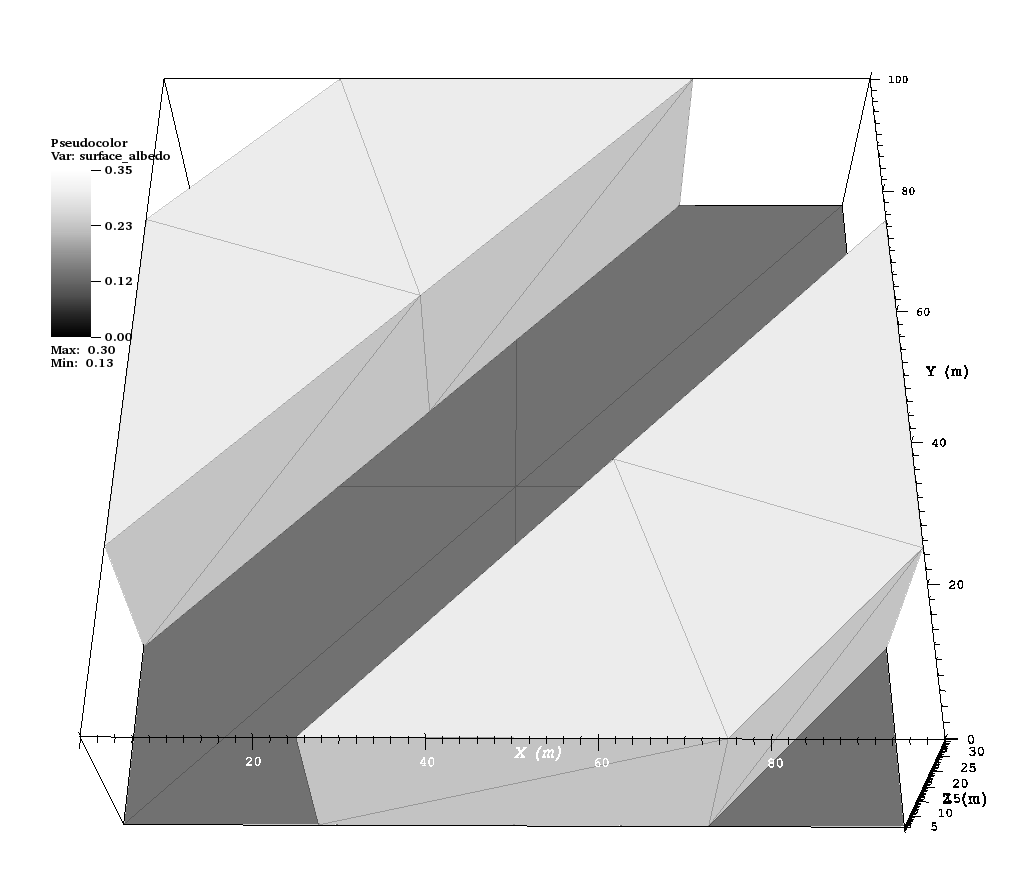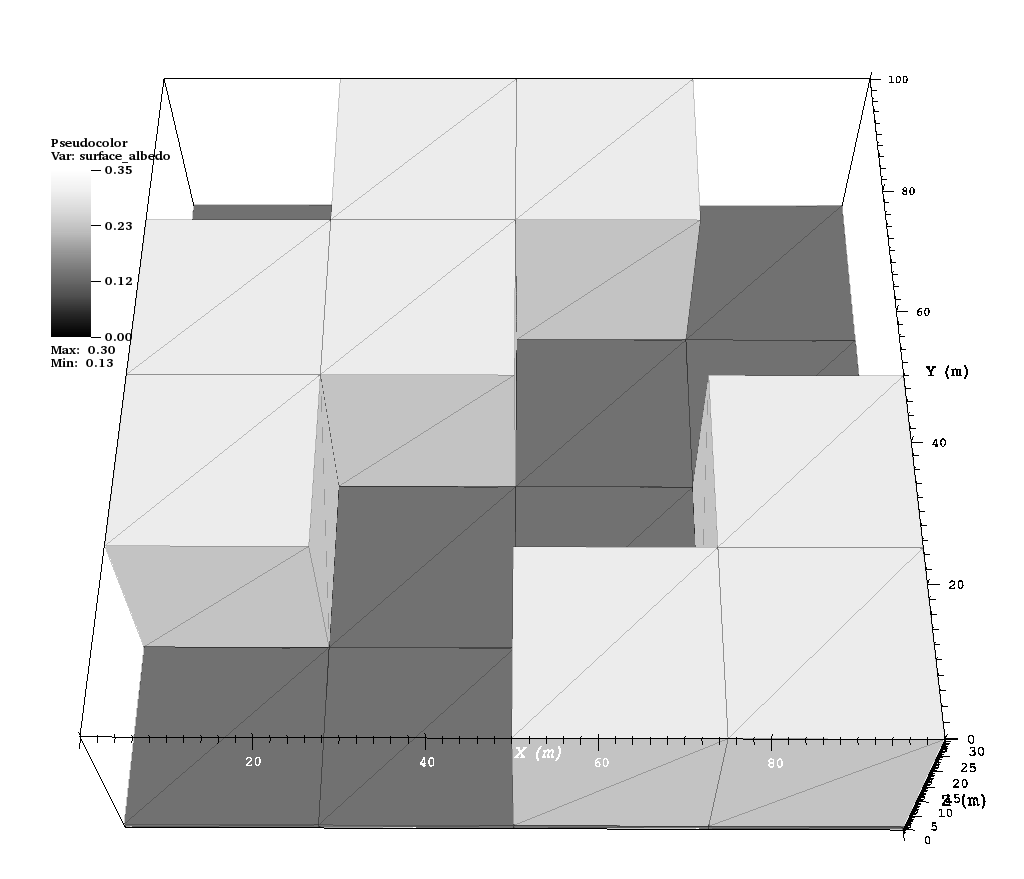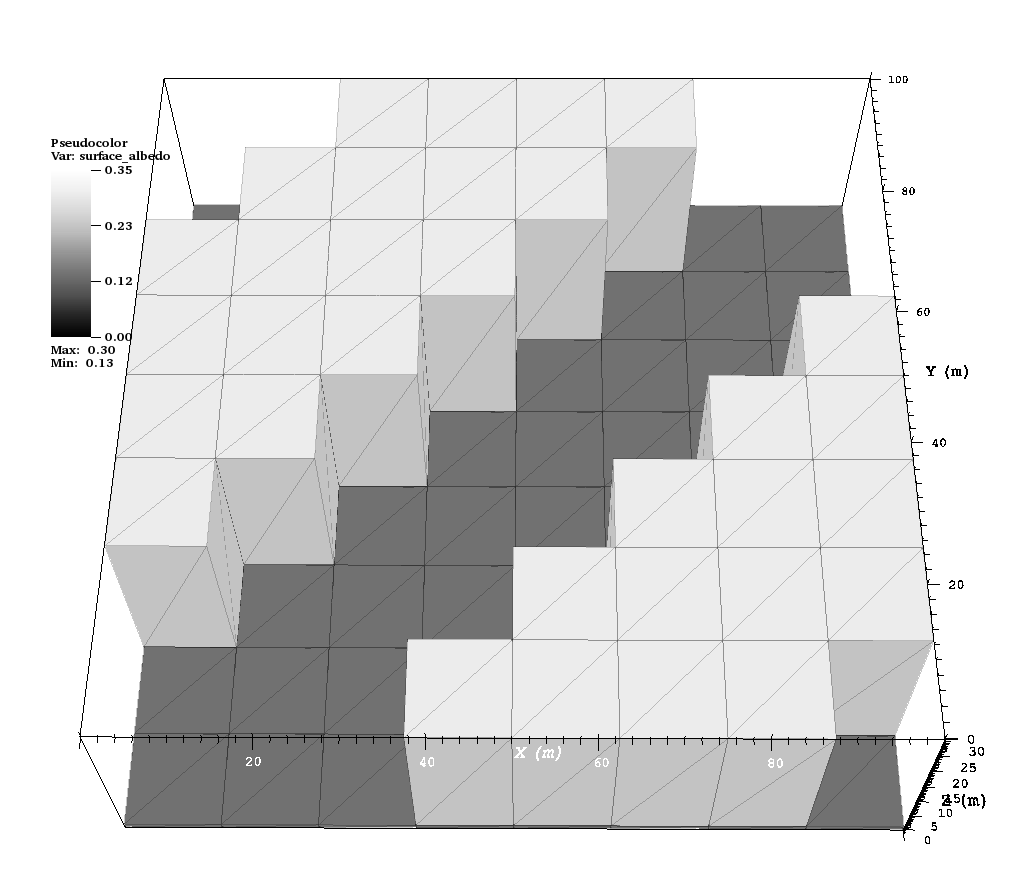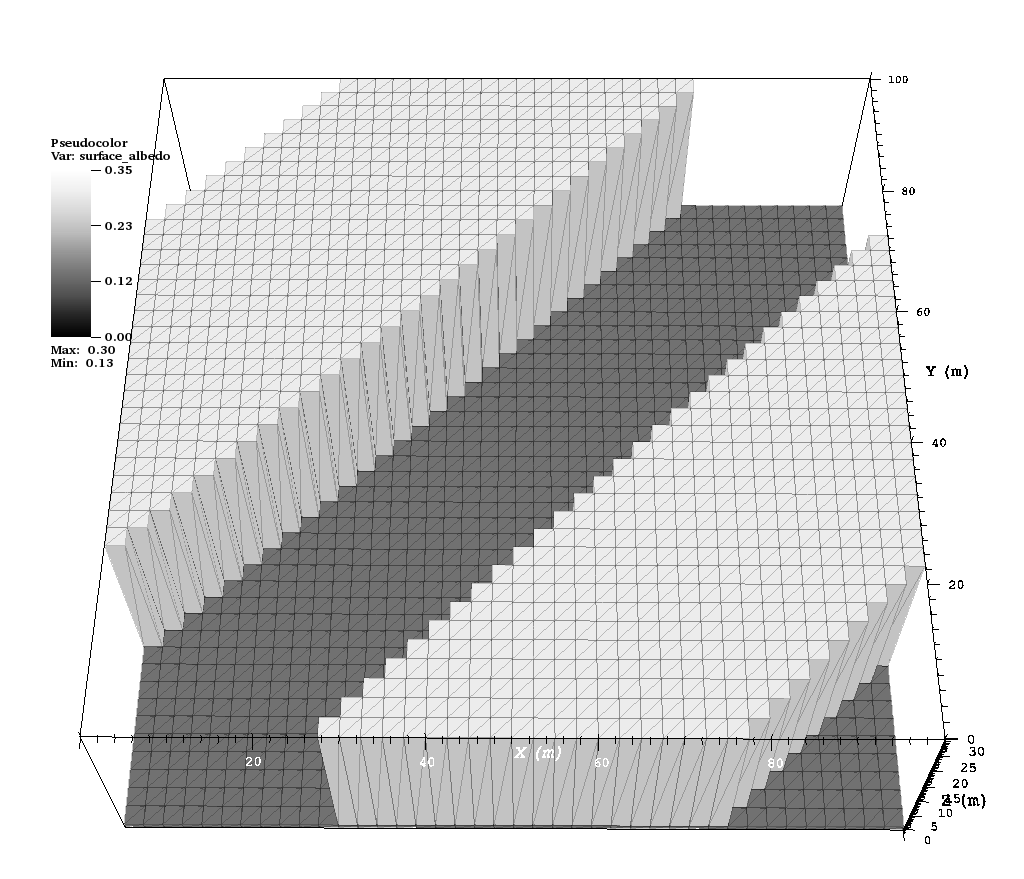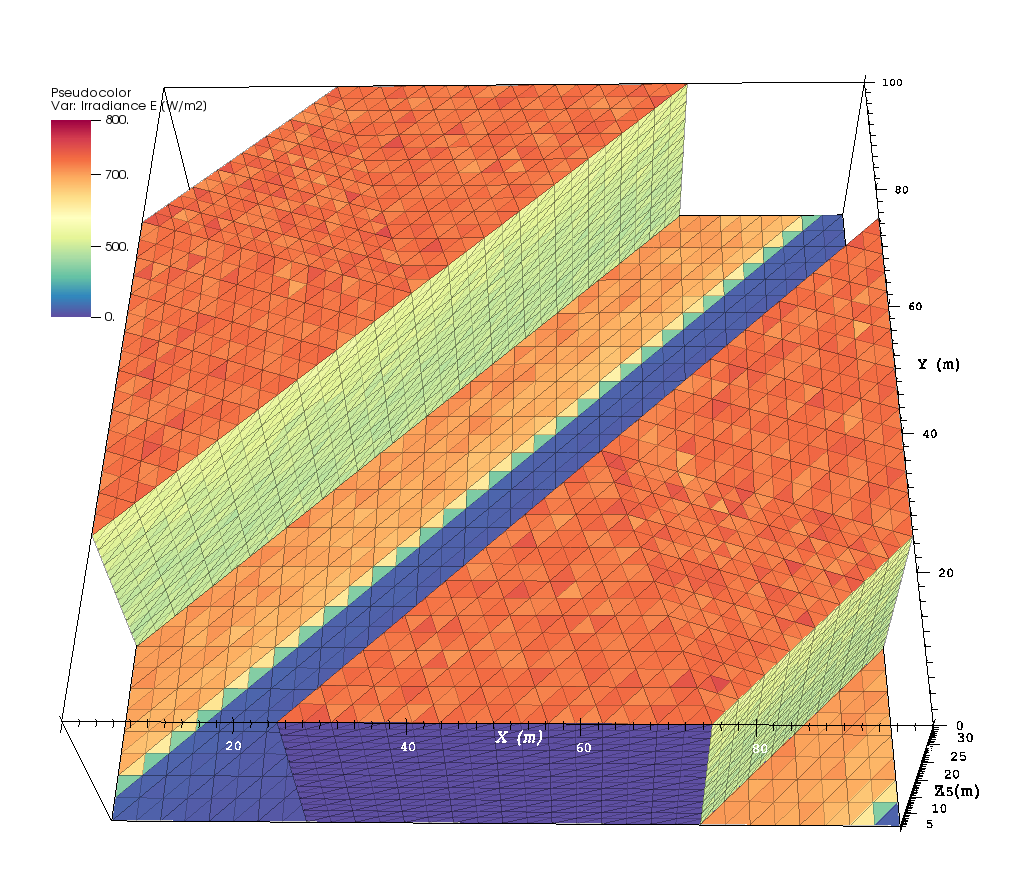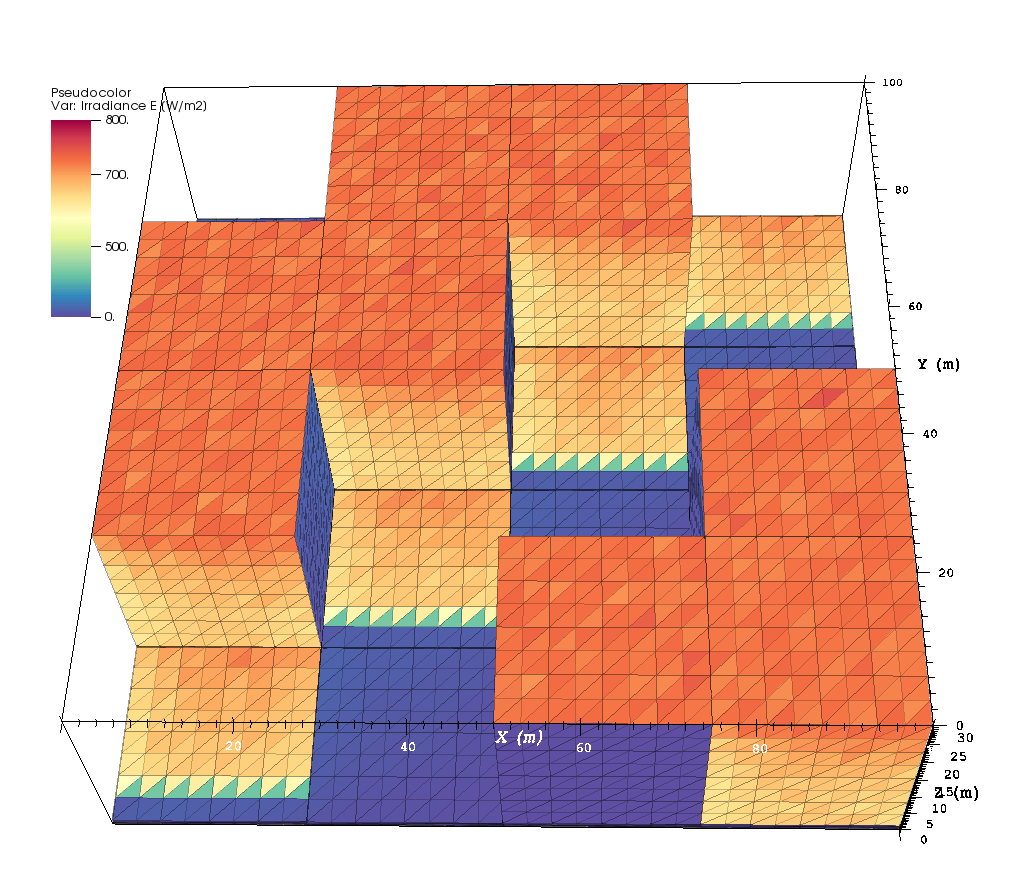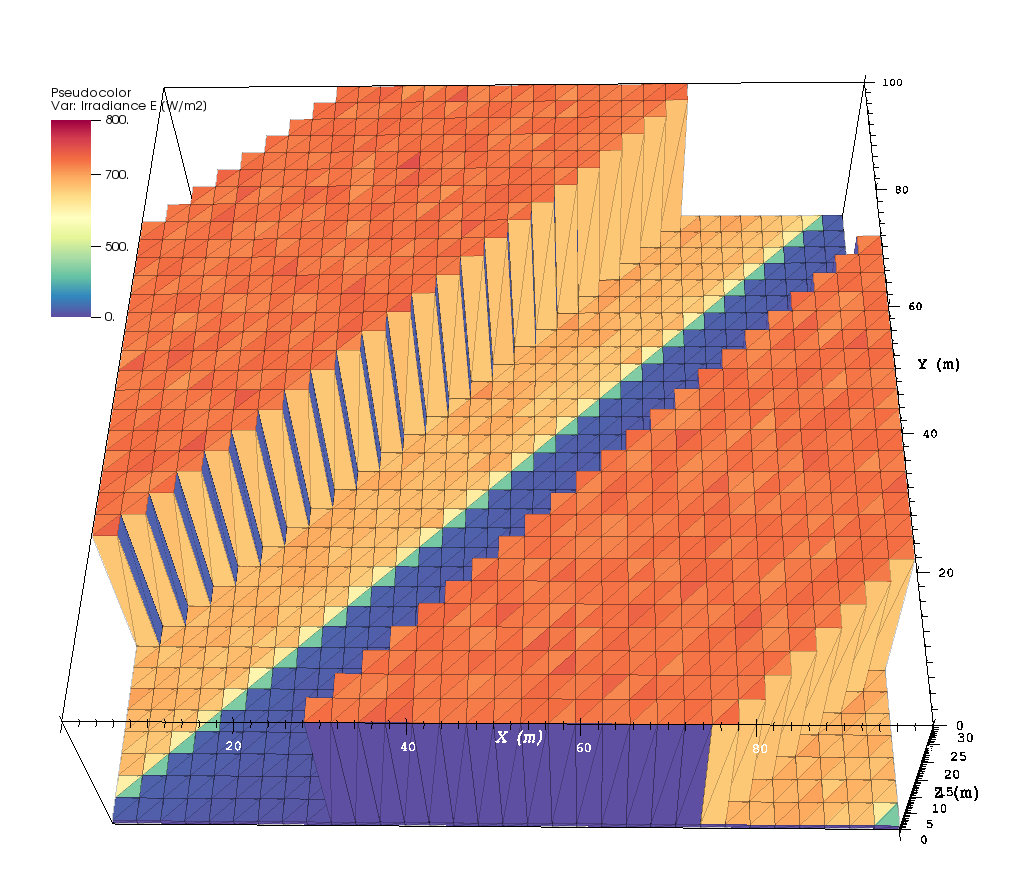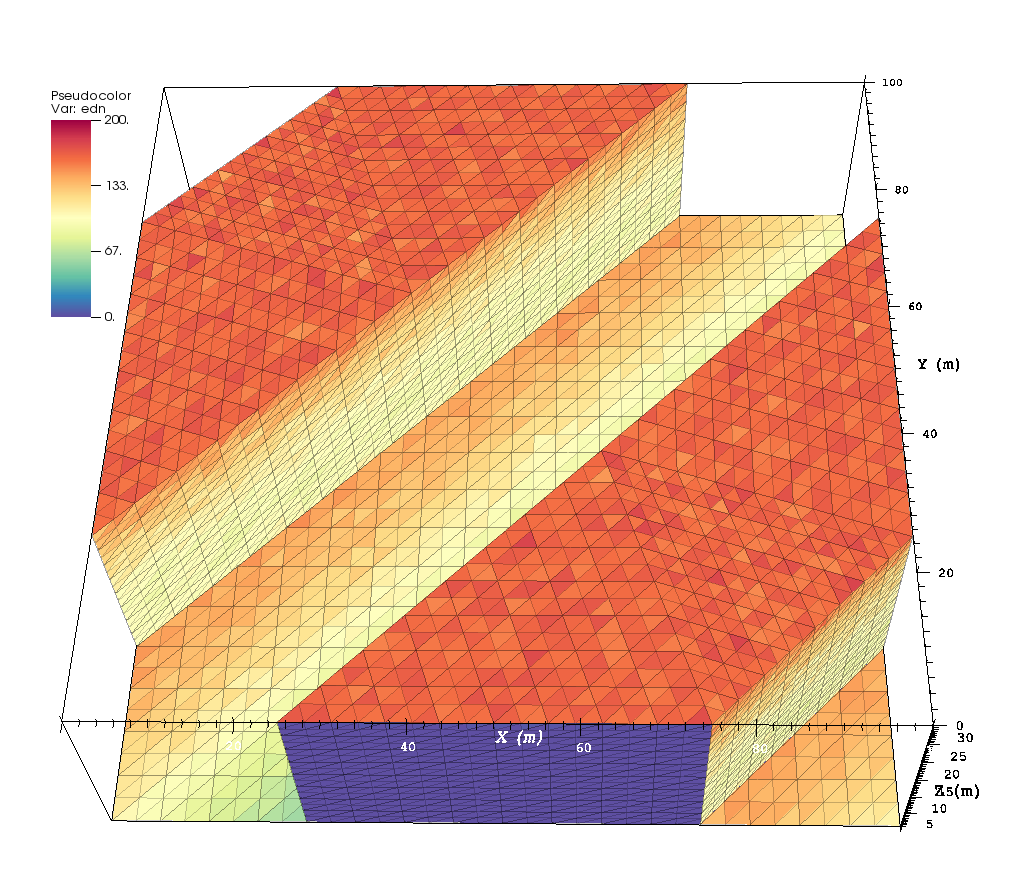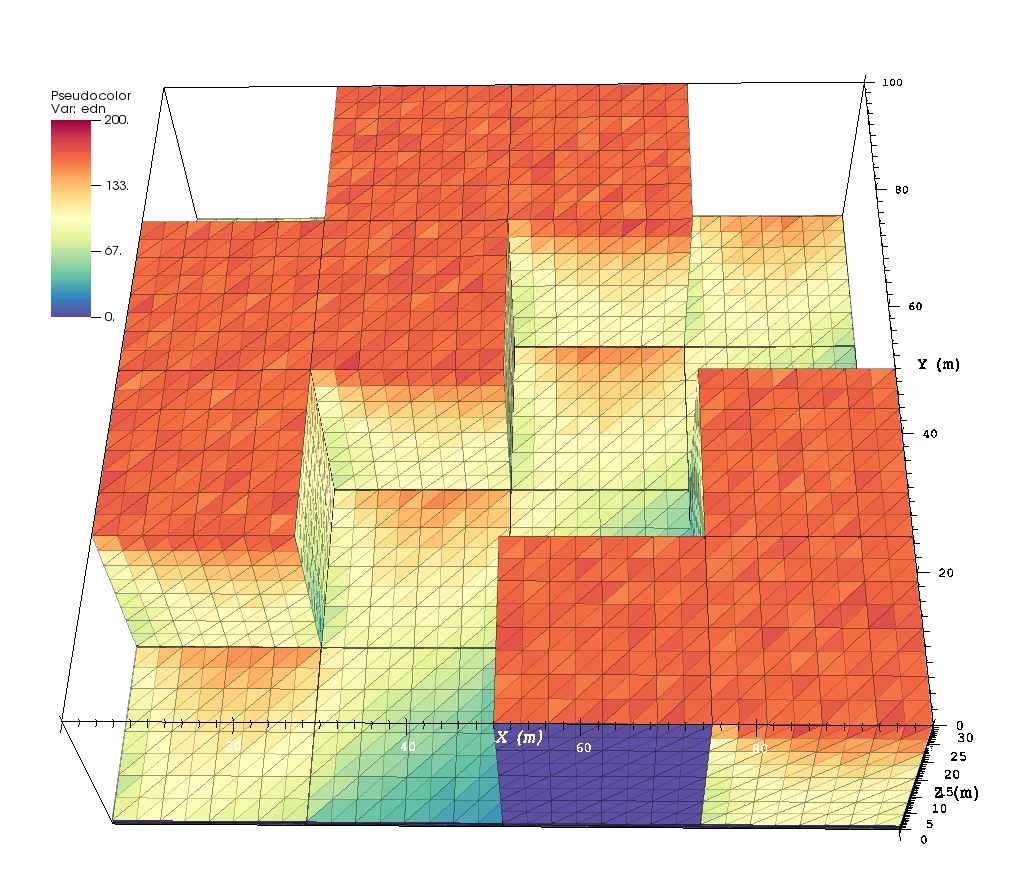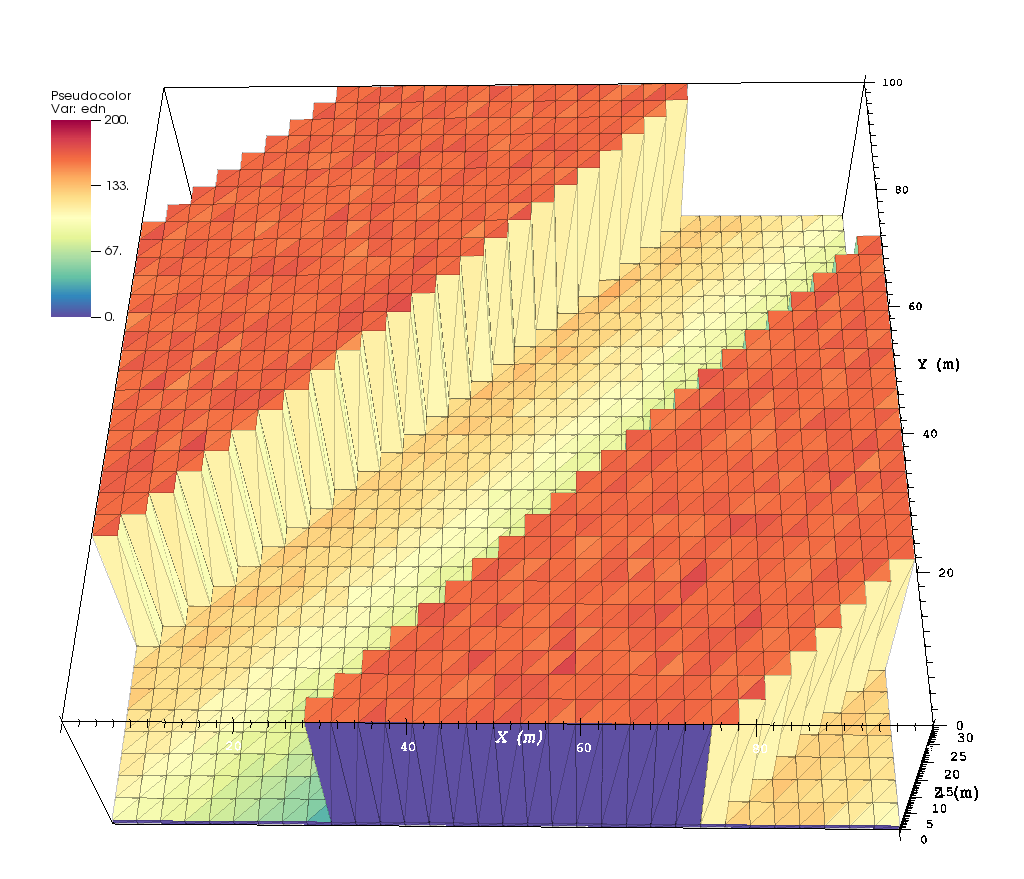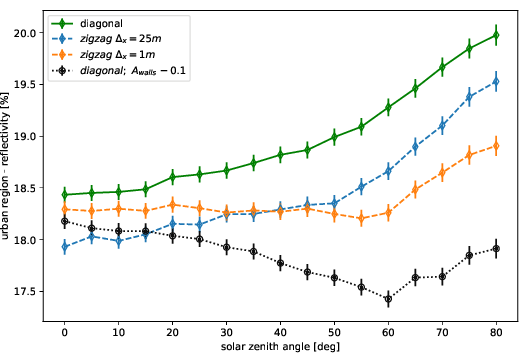A question that came up with the way that Palm-LES handles buildings in urban environments is related to diffuse reflection of radiation.
Palm uses a structured rectangular mesh and therefore can only represent grid aligned edges.
So instead of having a diagonal wall fassade as in a), the buildings are approximated with grid aligned zig-zag edges.
Mesh visualizations in b), c) and d) depict the same street on varying resolutions.
The width of the street, i.e. the distance between the buildings is \(\sqrt{2} \cdot 50 m\), i.e. a distance in x and y of \(50m\).
While this change in geometry certainly has an impact on the radiative transfer in case of complicated reflection functions (BRDF’s), in the scope of the Mosaik2 project where the goal is to drive the LES model with readily available data, we assume lambertian reflection with broadband albedo values. This opens up a couple of remaining questions …
- Does the grid alignment have a non-negligible effect on bulk properties of the radiative transfer (e.g. average absorption in the urban canopy), even in the case of lambertian reflections.
- If there is an effect, which factors influence it, i.e. is it resolution dependent, does it depend on the solar angles, on the albedo etc
To start answering the above questions, I setup the following simulations:
Fig: Visualizations of surface irradiance in \(W/m^2\) for a) the diagonal case, and the zig-zag case with b) \(\Delta x=25m\) and c) \(\Delta x=3m\)
Fig: Visualizations of surface diffuse irradiance in \(W/m^2\) for a) the diagonal case, and the zig-zag case with b) \(\Delta x=25m\) and c) \(\Delta x=3m\)
- solar zenith angle will be varied (in the depicted example \(45^\circ\))
- the sun is in the south, i.e. bottom (notice the shadow on the surface)
- the domain has circular boundary conditions, i.e. radiation leaving the domain right, enters at the left, same in front and back
- the grid resolution of the zig-zagged blocks is varied
As a proxy for average solar urban canopy absorption, we may look at the reflectivity R of the scene just above the buildings (30m), i.e. we compute
and plot it for various grid resolutions and solar zenith angles.
We see that for small zenith angles, and high-resolution simulations, albeit not fully reaching the value perfectly, we approch the diagonal wall results.
However, the fact that the surface normals in the original case are pointing to [1,-1,0]
versus in the aligned case where we have half of the normals [0, -1, 0] and the other half at [1,0,0] changes the reflection pattern which lead to up to 1.5% change in the total absorption.
To put that into perspective, we may look at the diagonal results with the building walls albedo reduced by \(0.1\) (black dotted). The fact that a 0.1 albedo change on the side walls alone has such a large and non-linear(with respect to sun angles) impact on the net-absorption, leads me to the conclusion that the neglect of correct surface orientations may lead to considerable errors but are swamped by insufficient information on building albedo and reflection functions.
